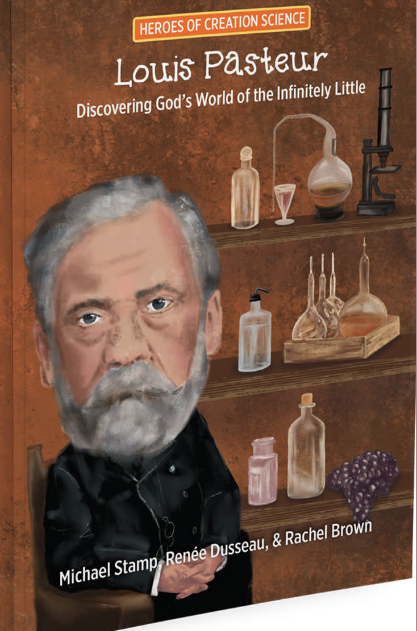Articles » Zoology
Special eyes
Horseshoe crabs don’t look mysterious and enigmatic, but they are. Normally one would not expect any very deep questions to be evoked concerning creatures which resemble miniature tanks, moving with ponderous dignity across the beach. But these marine creatures with shells, these “crabs”, are not actually miniature when compared to other animals of the seashore. These animals weigh as much as 4.5 kg (10 lbs) and they may grow to be 60 cm (2 ft) long. To find one such specimen would be memorable enough – but where there is one, there are generally thousands or hundreds of thousands. At the appropriate time in the spring, some beaches along the Atlantic seaboard from Maine to Yucatan Peninsula, are invaded by thousands or even millions of these apparitions. Read the rest of this entry »
Despite the fine quality of their fur coats, they look a little dumpy. Their teeth also are a little too prominent to be pleasing – but their whiskers are cute. Certainly they are prominent Canadians. On formal occasions they go by the name Castor canadensis, but to their friends they are simply beavers. The plan of action for any beaver couple is to raise their young and to enjoy long healthy lives. This is not a surprising nor an unusual agenda. Nevertheless of all the wildlife creatures that make their home in most parts of North America, the beaver is fast becoming extremely unpopular. The fact is that beavers are the only animals in the world which can change the landscape to suit their own needs and desires. The trouble is that the beavers’ alterations often do not fit the plans of people living in the same area. Then again in other parts of the country, wildlife officials regard beavers as economical wetlands managers. Read the rest of this entry »
Can you name an animal that is dainty as silk but devious besides? Probably not. From their pictures, we might imagine that octopuses are solid, scary and, like the majority of marine creatures, not too intelligent. The scary part of the picture is correct, especially if one is a crab or shrimp or abalone. Nevertheless octopuses are typically as insubstantial as a lady’s negligee and smart, smart, smart. Read the rest of this entry »
As a teenager I was active in the Boy Scouts, and in lower levels of school I had an interest in science and math. I was a radioman in the US Navy during the Second World War, and in college I majored in zoology with very strong concentrations in Bible and chemistry. Read the rest of this entry »
Have you ever discovered something new, like a new recipe, a new and better way to carry out a task, or a new object in the sky? Whether you have invented a device which will make you rich, or whether you have identified a new phenomenon in nature, the joy of discovery is a reward in itself. When it comes to identifying new organisms, many people have turned their attention to the rain forest. New plants and new animals, often insects, are routinely described from that part of the world. Deep sea divers have also encountered some very strange creatures from the ocean depths. The sea between Denmark and Sweden, however has been fished for many centuries. We would not expect to find any new creatures in those cold waters, would we? Read the rest of this entry »
Several years ago I tried my hand at bird’s nest building. It wasn’t actually my idea to do this. As mother helper of the day, it was my job to assist the kindergarten class in their various projects. One of these was the nest building. We were provided with grass, feathers, wet mud and so one. What we didn’t have was know-how. One person held grass in a rough circle while another tried to daub on wet mud. What a mess we made! One thing we did learn was a profound respect for birds. How do they manage with only beaks, feet and wings? The birds obviously know what they are doing. Who told the birds how, what, where and when to build their nests? This is a very good question. Read the rest of this entry »
Truly there are few things as thrilling as beautiful music. Was it not Shakespeare who wrote “If music be the food of love, play on!” Indeed music not only fosters romance, but it can also make us laugh, or cry, or move with the rhythm, or all of the above at once. There are few things which play on our emotions the way music does. Music however is not a gift unique to people. There are other created creatures with wonderful musical talents. Consider the songbirds for example. Read the rest of this entry »
We might suppose our technology is first class. With computers, satellites and precision devices, our society happily adapts to ever more sophisticated machines. Each achievement provides the platform for new uses of technology and further inventions. Rather than giving thanks for these insights, all too often we pride ourselves for our knowledge. Read the rest of this entry »
Imagine that you found a hockey card. The pictured individual looks just like most other hockey players but you don’t recognize the name. It doesn’t look that exciting does it? You might be tempted to throw the card in the nearest garbage can. Your friend however advises caution. Why not investigate the value of the card? Suppose for the sake of argument that your card turns out to be extremely rare and worth a lot of money. Suddenly, what previously looked like junk, has now become a wonderful possession. The card has not changed, but your appreciation of what the card represents, has changed drastically. Such situations sometimes occur in real life. Not all of these instances involve things, some involve living creatures. Read the rest of this entry »
It was just a matter of time, of course, following the discovery of geckos’ amazing ability to stick to smooth surfaces by means of molecular forces (see Let’s Learn from the Best), that another such animal would be discovered. One might have expected that the next discovery would be in another reptile, similar to the gecko. Imagine our surprise, then when we heard that the second example is nothing like the first. An article published last year in the Journal of Experimental Biology reveals that such a phenomenon has been discovered in a jumping spider (Evarcha aracuata) commonly found in Europe. While many creatures such as flies use an adhesive fluid (ugh) to stick themselves to surfaces, these jumping spiders use ‘dry adhesion’ like the geckos. Read the rest of this entry »
Among living creatures, it does not take a specialist to realize that jellyfish are not dainty delights of the deep. Although they may be beautiful in appearance, jellyfish are successful predators. Read the rest of this entry »
Since the advent of global positioning satellites, or at least since their availability to civilians, scientists have found many uses for these devices. One of the more interesting applications is to track animals, as in the “fish with chips” program. This is a multimillion dollar Census of Marine Life project. In conjunction with this program, thousands of marine animals in the Pacific Ocean, including many fish, have been fitted with electronic surveillance tags. Read the rest of this entry »
Hibernation on Demand? Here is a question that has baffled me for quite some time. How could eight people on the ark look after so many animals? Consider this: Noah and his three sons had to look after all these animals for 53 weeks while living in the ark. Read the rest of this entry »
How’d you like to live the life of a snake? For one thing, you’d find getting around much different without arms and legs. But then dust would be a big part of your diet. Blah! Scientists have learned that snakes use their forked tongues for tasting and smelling. Even with its mouth closed, a snake can stick out its tongue; an amazing feat indeed. These slithering reptiles smell their prey by picking up scents from the air and from dust on the ground in order to find their next meal. The tongue then carries these particles to a specialized organ located on the roof of the mouth, called the Jacobson’s organ. This sense organ performs a chemical analysis of the ingested particles. Think of the salivating smells from some fine cooking. A snake bites the dust of the ground not so much for nutrition but for smelling his way to his next meal. Read the rest of this entry »
The gecko, famous in some circles in car insurance commercials, is a very unique but average sized lizard. It is well known among biologists for its chirping vocalizations and its sophisticated adhesive toe pads that allow it to climb with ease up smooth vertical surfaces. Actually, the gecko’s ability to run vertically up and down at will has astonished almost everyone who has ever seen them, from Aristotle in the 4th century BC to today. Read the rest of this entry »






